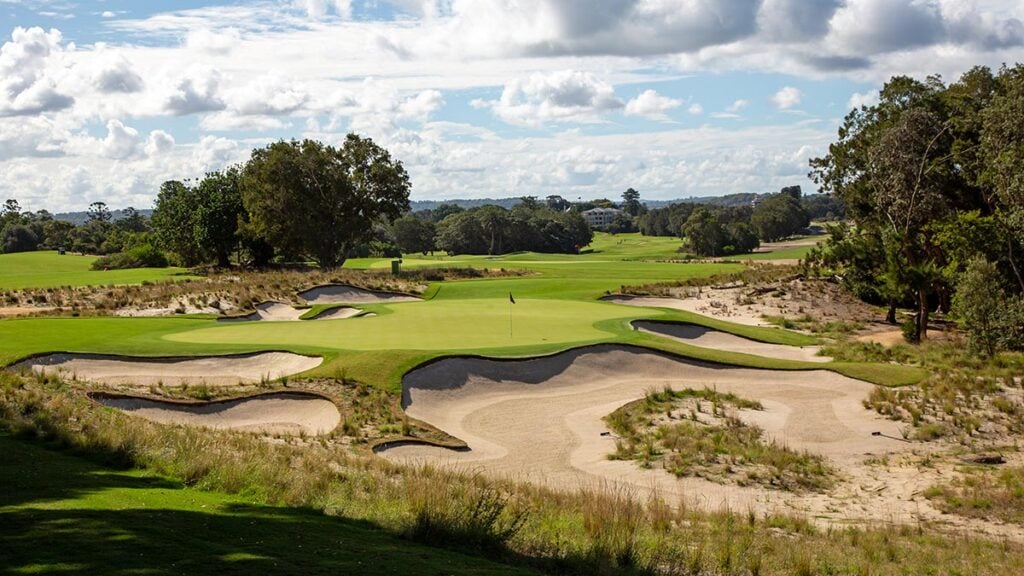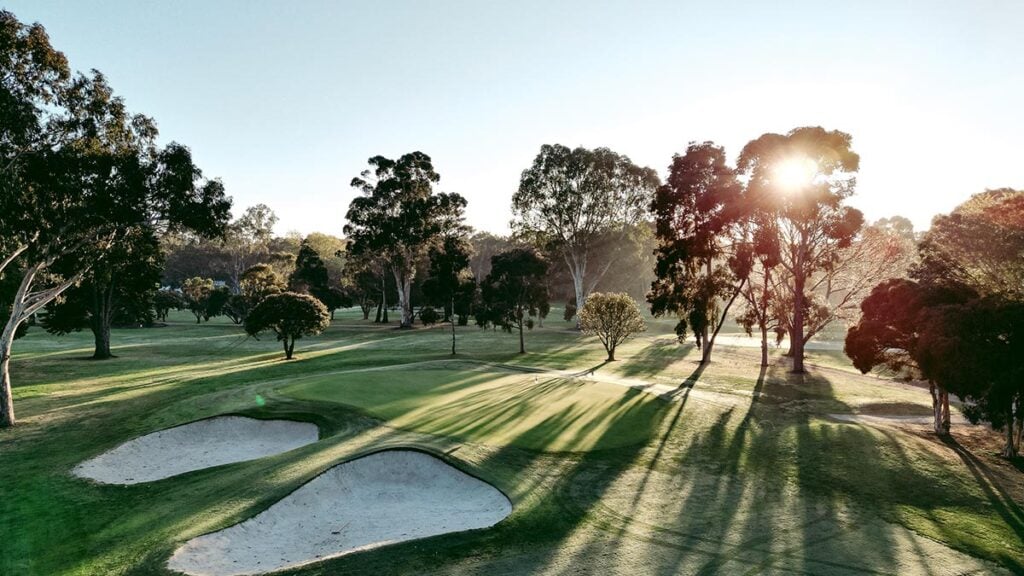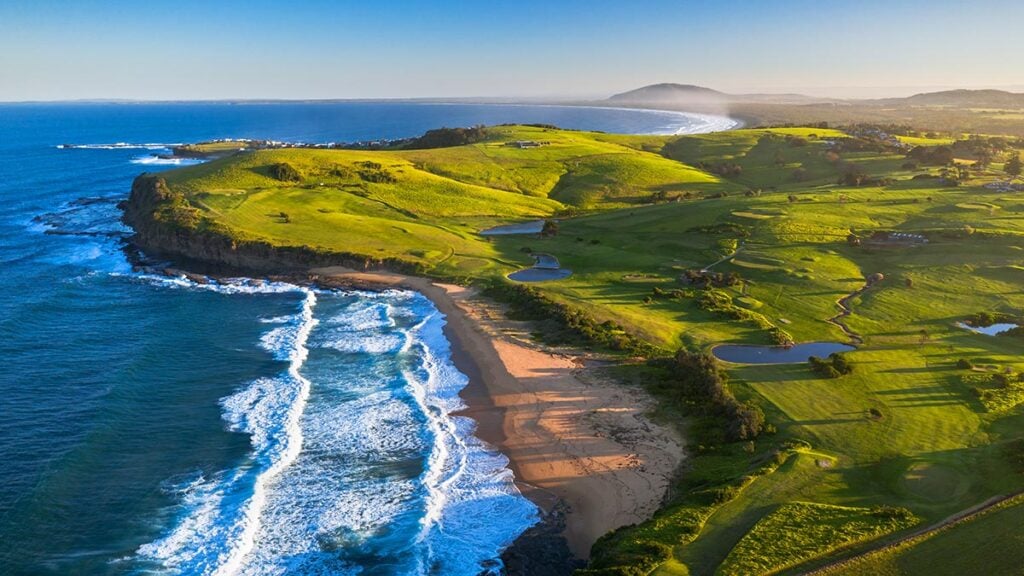We reveal the 25 layouts that take top turf conditioning to a whole new level and find out why the COVID-19 lockdown actually provided a timely ‘reset’ many courses so desperately needed.
Course photography: Gary Lisbon
When it comes to courses, conditioning is the swimsuit section of golf’s beauty pageant. Forget what the contestant has achieved, what hidden talent they might possess or their view on key world issues, how do they look?
Appearances are as superficial as they are indelible in the mind. In March this year, shortly after our biennial Top 100 Courses ranking was released, Australian Golf Digest polled our 82,000 Facebook followers and asked, “When you evaluate a golf course, which feature do you view as more important: design or condition?” To our surprise, 76 percent responded in favour of condition, which meant – taking a little liberty here – more than three-quarters of you would prefer to play a ho-hum layout in supreme shape than a masterpiece in substandard nick.
Beauty, as we know, is in the eye of the beholder, yet a golf course’s attractiveness has long been entrenched in its design characteristics instead of the more volatile and superficial grooming. Or so we thought. Australian golfers today appear to be just as impressed by looks as architectural substance.
However, Conditioning makes up only 12.5 percent (10 marks out of 80) when it comes to our panel’s course evaluations, although there is additional focus on aesthetics in its sister categories. Along with Shot Values, Conditioning is arguably the characteristic of a course that everyday golfers seem to notice most during a round. It’s perhaps the aspect of a golf course with the capacity to change most during a two-year ranking cycle, too.
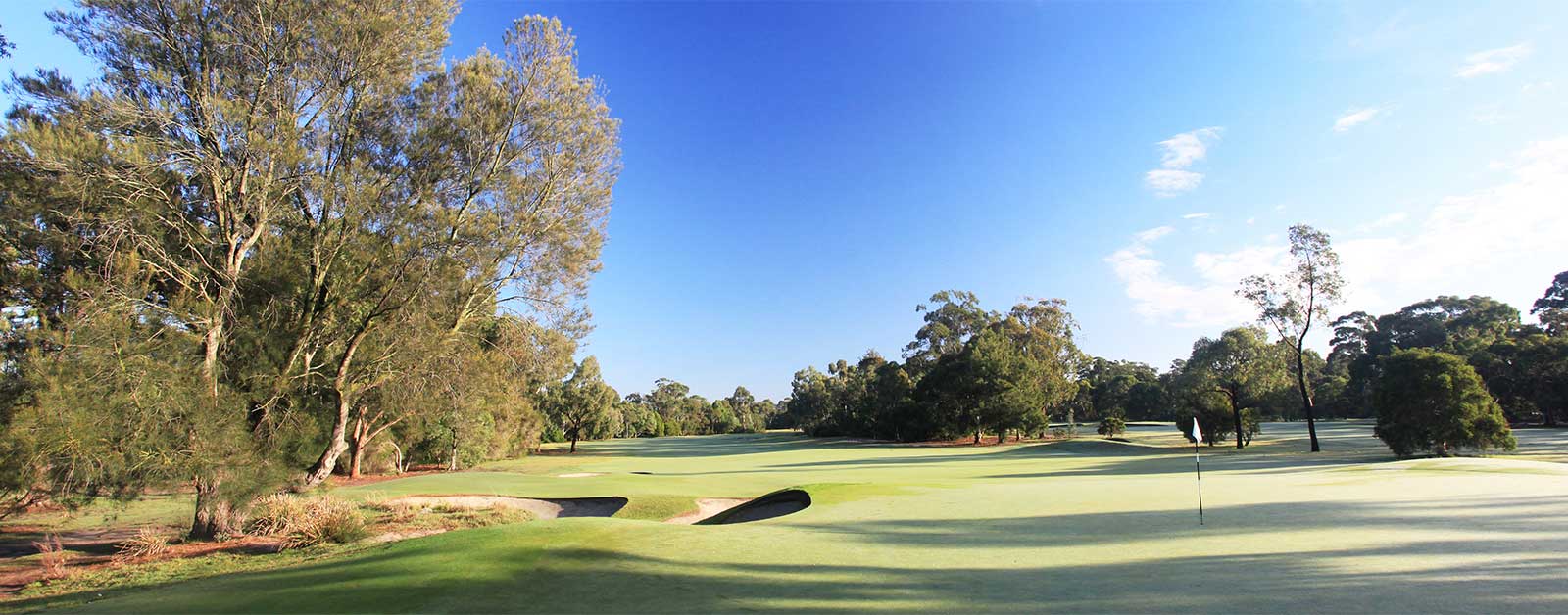
A New Definition
Conditioning was one area of Australian Golf Digest’s biennial rankings that had to change by necessity. The old definition, which placed a premium on lushness, was outdated, unfair and just wrong. Water usage is under greater scrutiny than ever before and perhaps nowhere more so than on golf courses, so ever since the 2006 ranking the category has been redefined. It now reads: “How firm, fast and rolling were the fairways? How firm yet receptive were the greens? How true were the rolls of putts?”
How is such an edict to be interpreted by our panellists? A great course should strive to maintain firm, fast surfaces that use no more water than necessary, and a deep green colour of turf should not be an objective.
Here is an extract on Conditioning from the handbook each member of our judging panel receives:
Golf courses must be compatible with the environment, and sustainable in times of drought. Experts tell us a smart first step for any golf course is to cut back on water usage. Drier turf is usually healthier, less susceptible to diseases, and provides more roll to tee shots and smoother surfaces for putting. Less water means lower electricity bills for high-volume pumps and less fuel for mowers used less often. Granted, the shade of turfgrass might be less intense.
To do our part, Australian Golf Digest redefined the Conditioning category used in our course rankings. The old definition asked judges, “How would you rate the playing quality of tees, fairways and greens when you last played the course?” That definition focused on uniformity and perfection of turf, and often rewarded overly lush green turfgrass.
The present definition focuses on water reduction and improved drainage, demonstrated by firm, fast, rolling fairways and firm yet receptive putting surfaces. It has nothing to do with the colour of the grass or the perfection of a lie. It rewards courses that water less (but sensibly) and makes it easy for each judge to evaluate conditions on the basis of golf shots. It takes into account all types of turfgrass. Non-overseeded Bermuda fairways will be firmer and roll more than overseeded Bermuda, for example, and lean, off-green bentgrass fairways offer much more roll than saturated bent. Clearly, we don’t look kindly on greens that are thatchy or squishy, but we’re not in favour of concrete-hard greens. They must be firm, yet still receptive, to earn high points.
At the urging of many judges, we have also incorporated another test in our Conditioning category, that of pure roll of putts. If a green is firm yet receptive but is grainy or patchy, and thus providing inconsistent putting, it shouldn’t score as high as greens that provide pure putting surfaces.
Great Conditioning is not striped mowing patterns in the rough, or uniform lies in bunkers. That’s overindulgent cosmetics. We think every club would benefit by adopting our definition as a standard for course conditioning.

Time For Some Tinkering
The closure of most golf courses across Australia brought about by the coronavirus pandemic opened a window of opportunity for many clubs when it came to conditioning and course improvements. Victorian and Northern Territory clubs shut for longest this autumn – nearly two months – while almost every state and territory saw golf stop for even just a few days. Unsurprisingly, though, it was Victorian clubs where the most action shifted gears.
Kingston Heath Golf Club, which will host the next Australian Open (now set for early in 2021), was a hive of activity during the shutdown. Course superintendent Hayden Mead told Australian Golf Digest some work undertaken on the No.3-ranked course in the country was scheduled with the Open in mind and would have occurred anyway.
“If it wasn’t a tournament year, it probably would have been a bit different. We probably would have gone harder on a few jobs and got a lot more jobs done,” Mead said, adding that the club is still working towards a late November date for the national championship “until we hear otherwise”.
“In a tournament year you’re pretty limited – especially in Melbourne – because basically what we, as we say, ‘put to bed’ in April is what we’re going to be able to produce in November for a tournament, so we have to be mindful of that. But the club was fantastic. They thought this [period with no play] was an opportunity to take the course forward even further.
“We got stuck into renovating all the bunkers, which we were going to do anyway but normally have to do in between everyday golf, meaning it takes us about four months to do. So we got stuck into that because it was a good job to do while there was no golf. We also returfed a few wear areas that weren’t going to be walked on for six weeks or so. They were the main jobs.”
“We got stuck into renovating all the bunkers… because it was a good job to do while there was no golf.”
– Hayden Mead, Kingston Heath
In an illustration of a club pulling together, all staff – bar staff, casual staff, the lot – remained employed to the point that clubhouse staff at times saw their workspace moved onto the golf course. “We had some big numbers out on the course,” Mead says. “The hospitality staff were out raking leaves and cleaning up under treelines. It peaked at about 26 staff one day, which was great.”
Organising non-course workers had its challenges – some indoor staff didn’t know what a bunker was, let alone how to rake one – while being unaware how long the course was going to be closed for created headaches for all clubs as the Andrews Government felt the brunt of golfer backlash from Mildura to Mallacoota.
Preparing and caring for golfer-less courses during ideal autumn weather took some getting used to for golf-course staff at all clubs. Regardless of their location, several course superintendents contacted for this story repeated the same word to describe the scenario: eerie. Yet the unusual circumstances created a unique opportunity, so more clubs pounced at the chance to work on their course without golfers around, particularly in Melbourne.
“The course has loved the rest,” Kew Golf Club superintendent Cameron Hall told “The Cut”, the Australian Sports Turf Managers Association’s weekly e-newsletter. “Areas that were struggling and thinning out have improved out of sight, with great coverage heading into winter. The majority of our time during closure was completing the capital works the board approved, including lifting and returfing five green surrounds with fine fescue, installing Capillary Concrete into 12 bunkers and installing drainage at the start of the seventh fairway. It has been great to knock over 90 per cent of the winter works during the closure.”
Spring Valley Golf Club opted not to stand down course staff but instead undertake work not normally possible when timesheets are full. Projects included extensive renovation of many bunkers, removal of trees or unsafe branches and raising any low fairway sprinklers, plus an early greens renovation.
Even venerable Royal Melbourne sprung into action. Director of courses Richard Forsyth brought forward the next two greens in the club’s ongoing programme of lifting greens and their surrounds to start work on the first green on the West course and the third on the East. As “The Cut” reported, all Suttons Mix green and fescue surround turf was lifted, with organic matter sod cut and shovelled into loaders for removal. Bunker sand splash was adjusted where needed and the green surfaces scarified. They were then smoothed out and the turf replaced.
Elsewhere in the state, the ever-popular Dunes Golf Links on the Mornington Peninsula used the empty fairways to perform the first major work on the Cups course in more than 20 years. Course manager Simon Muller and his team relocated the fifth green while new tee sites will allow the nine-hole layout to be played from 18 tees.

While Victoria was the posterchild for golf-course closure during COVID-19, it was not the only Australian state where course superintendents and staff were busy. And if their collective passion for their craft is ever called into question, one need only to speak to Idris Evans. As stronger lockdowns loomed, the course superintendent at The Western Australian Golf Club in Perth says he was prepared to ‘move in’ to his maintenance quarters and be locked in during lockdown, just so he could continue caring for the golf course.
“My wife wasn’t too thrilled at the idea,” chuckles Evans, who is also a member of the club. “But fortunately it didn’t come to that.”
The Western Australian club did close for three weeks, which opened a window for Evans and his course staff to give the layout a special brand of TLC.
“It was like a resetting of the clock for the golf course,” Evans says of the lack of traffic. “The first day, which was a Saturday, it felt strange not seeing a single golfer anywhere, but by about the Wednesday it was fantastic.”
Like many supers, Evans brought forward the autumn greens renovations, in his case by two weeks. However, some changes have remained since golf resumed in WA. Among those factors Evans describes as making a difference during a period of heavy course use was raising mowing heights. This is a common practice in cooler weather, but the 2.75mm cutting height is now 4mm, with greens cut every day. “They still run to 10.5 to 11 feet [on the Stimpmeter] anyway, but the turf is much healthier. Sometimes it’s the little things.”
The little things indeed. One course superintendent at a semi-private club not quoted in this story referenced a discussion he had with his club president about member course care. Ignorance of small yet important acts like divot and pitch-mark repair and correct bunker raking is every course superintendent’s bugbear and in this case had long been blamed on visiting players rather than members. Yet when the same neglect revealed itself with familiar frequency during the period of members-only play, the club president was forced to sheepishly acknowledge it was in fact the members who were at fault.
It’s a revealing anecdote, and one likely echoed across all golf courses. While the superintendent and course staff are paid employees of the club, the onus remains on golfers to keep up their end of the bargain when it comes to divots, pitch marks and bunkers. These seemingly small deeds are often what separate good course conditioning from great.
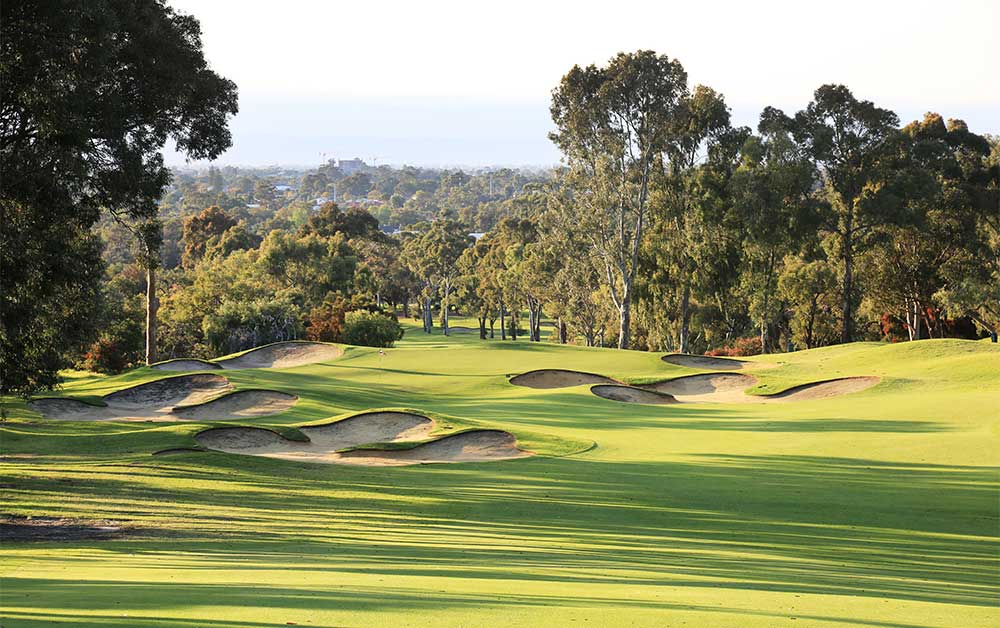
‘Green is not always good’
The ranking of the top 25 courses in Australia based solely on our Conditioning criterion doesn’t read too differently to the overall list. Twenty-two of the top 25 for Conditioning sit inside the overall top 25, while seven courses in the top 10 here reside in the overall top 10.
Melbourne’s Kingston Heath Golf Club takes top spot for Conditioning, perhaps in part due to an interpretation of the criterion that agrees with its course superintendent, Hayden Mead.
“Green is not always good,” Mead concurs. “But I don’t think we do anything different. We just really focus on producing the best surfaces we can for golf regardless of the colour and regardless of the health of the plant, because at the end of the day if we wanted healthy grass we wouldn’t be cutting it at 3mm and having 40,000 people tramp over it every year. Whether it’s dry or whether it’s green or whether it’s soft – we can’t help it with rain – we’re always trying to get firm surfaces. And these types of clubs can do that because we have the staff numbers to hand-water so much more and… push things to the limit more than other clubs can afford to do.”
Here are Australia’s top 25 golf courses based purely on their Conditioning, along with their average score out of 10 from our 2020 ranking:
- Kingston Heath: 9.18
- Royal Melbourne (West): 9.06
- Metropolitan: 8.95
- Ellerston: 8.94
- Royal Melbourne (East): 8.90
- Peninsula Kingswood (North): 8.88
- Cape Wickham: 8.84
- Victoria: 8.75
- Lake Karrinyup: 8.71
- The Australian: 8.66
- New South Wales: 8.65
- The National (Moonah): 8.62
- Royal Adelaide: 8.60
- Barnbougle Lost Farm: 8.54
- Kooyonga: 8.51
- Barnbougle Dunes: 8.50
- Peninsula Kingswood (South): 8.42
- The National (Old): 8.41
- Joondalup (Quarry/Dune): 8.40
- Elanora: 8.36
- Cathedral Lodge: 8.29
- The Lakes: 8.27
- Royal Queensland: 8.17
- Woodlands: 8.15
- Barwon Heads: 8.15

